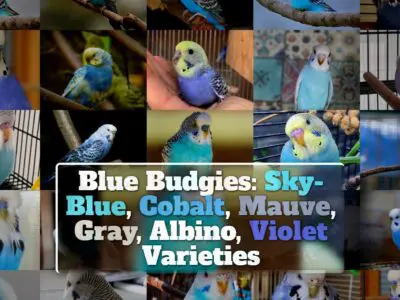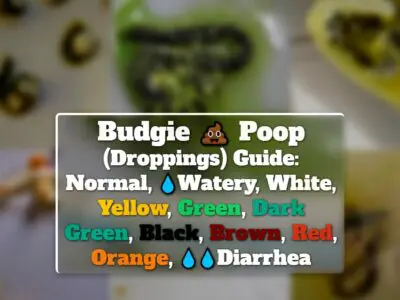Diving into the realm of budgies beauty, nothing exemplifies vibrant allure quite like the green budgie.
In the expanse of budgie varieties, the green budgie has a unique position.
What is a Green Budgie? A green budgie has striking green color comes from a genetic series known as the yellow-based or green series, which influences the visual display of their feather coloration.
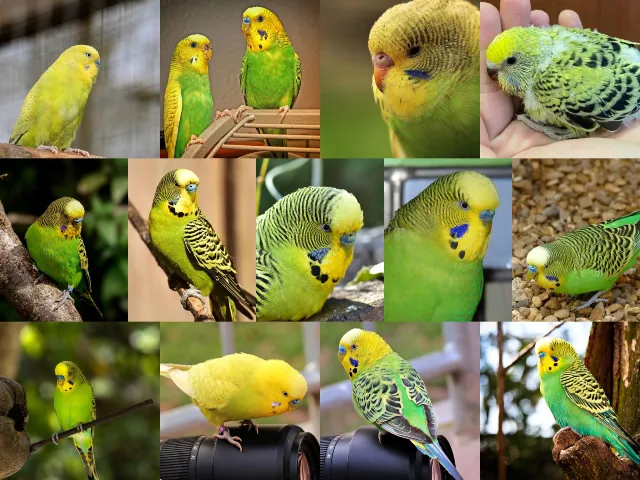
Their plumage primarily exhibits shades of green, decorated with a unique pattern of black markings across the back and wings, thus the name – green budgie.
This versatile bird has an interesting range of green shades and variants, such as light green, olive, gray-green, dark green, and even lutino budgies, which we’ll explore later on.
What makes them truly remarkable, however, is that all budgies in their natural habitat are green, a testament to nature’s preference for camouflage and survival.
In this article, we’ll dive deeper into the world of green budgies – their physical and behavioral characteristics, breeding practices, photos, videos and answers to common questions, offering a comprehensive overview of this fascinating budgie color varieties.
What Does Green Series (Yellow-based) Budgie Mean?
In the world of budgies, color is far more than a visual spectacle.
It’s a complex dance of genetics and pigmentation, where each hue is an expression of the underlying genes.
The green series, often referred to as yellow-based, signifies one of the primary color categories in budgies.
Now, you might be wondering: Why is the term ‘yellow-based’ used if the bird appears green? The answer lies in understanding the genetic base color of budgies.
Budgies have two basic color series, blue series (white-based) and green series (yellow-based).
A budgie’s genetic makeup determines which base color will be predominant.
If a budgie is genetically yellow-based, it implies that their base color, in the absence of other color-altering genes, will be green due to the blending of yellow pigments with the structural blue color of their feathers.
Thus, when we talk about ‘Green Series’ or ‘Yellow-based’ budgies, we are referring to budgies that carry the yellow-based gene, manifesting in a beautiful spectrum of green colorations in their plumage.
A Colorful Spectrum: Yellow-based (Green Series) Budgie Variations
The yellow-based or green series in budgies is not a one-size-fits-all green.
Instead, it encompasses a captivating spectrum of variations, each distinguished by its unique shade of green, influenced by the combination of genetic factors and pigmentation.
Here, we delve into some of the mesmerizing variations of green budgies:
Light Green Budgie
As the name suggests, light green budgies flaunt a soft, light green plumage, which is the result of their yellow base color combined with a thin layer of blue structural color.
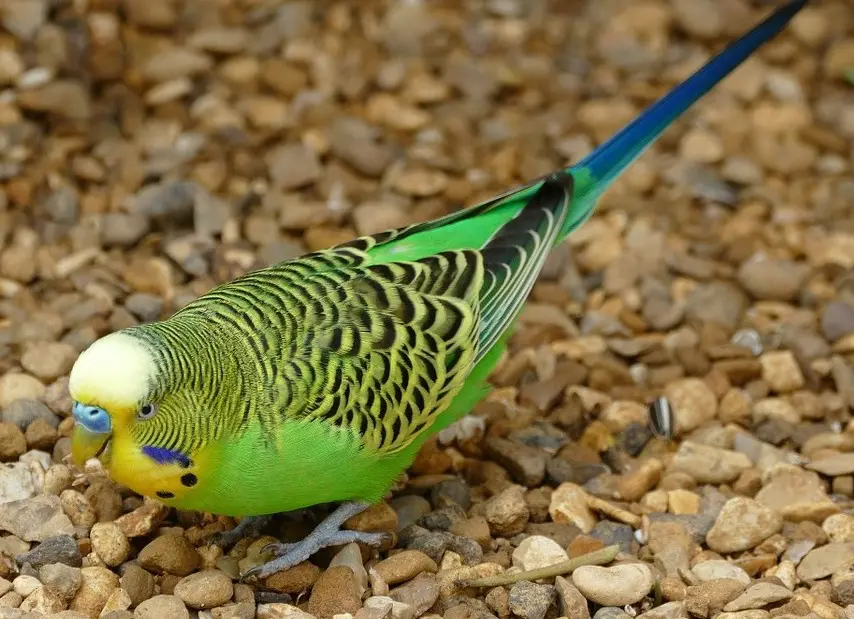
Dark Green Budgie
Dark green budgies showcase a deep, dark green coloration.
Similar to the olive budgie, this variant also involves the dark factor gene, but with a single dark factor, resulting in a color that is darker than the light green but lighter than the olive.
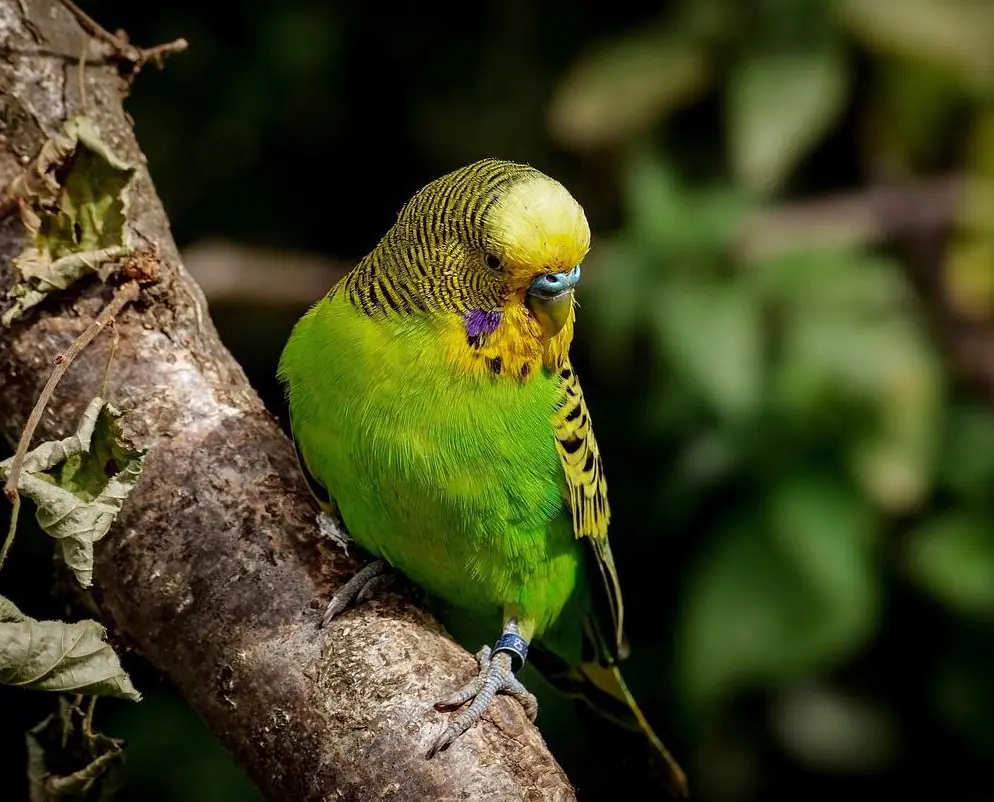
Olive Green Budgie
Olive budgies display a dark, olive-green plumage.
This variant results from the dark factor gene, which intensifies the green color, giving the bird its unique, rich, olive shade.
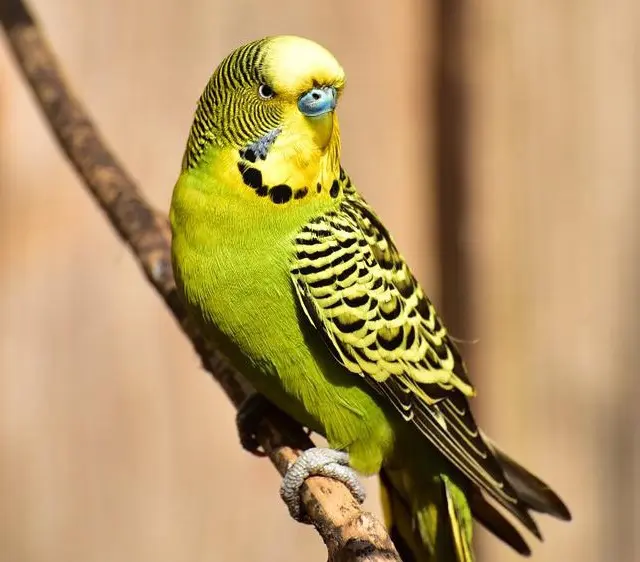
Gray Green Budgie
Gray-green budgies are a beautiful blend of green and gray.
This intriguing color results from the interaction of the yellow-based green color with the gray factor, leading to a somewhat muted, grayish-green hue.
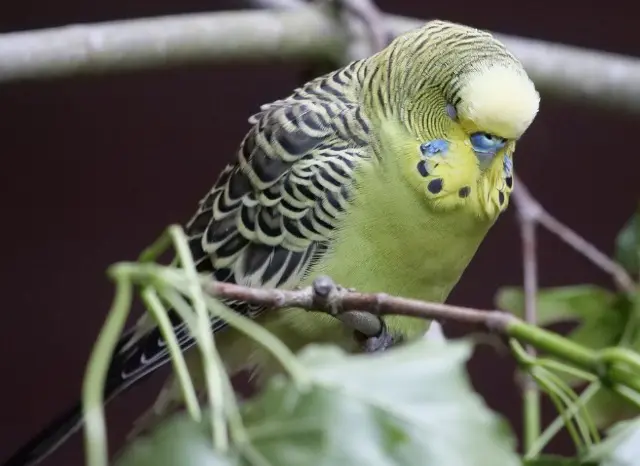
Lutino Budgie
Lutino budgies present a striking yellow color, almost appearing as a bright, golden bird.
While they belong to the green series, lutino budgies lack the blue structural color, allowing the yellow pigment to dominate fully.
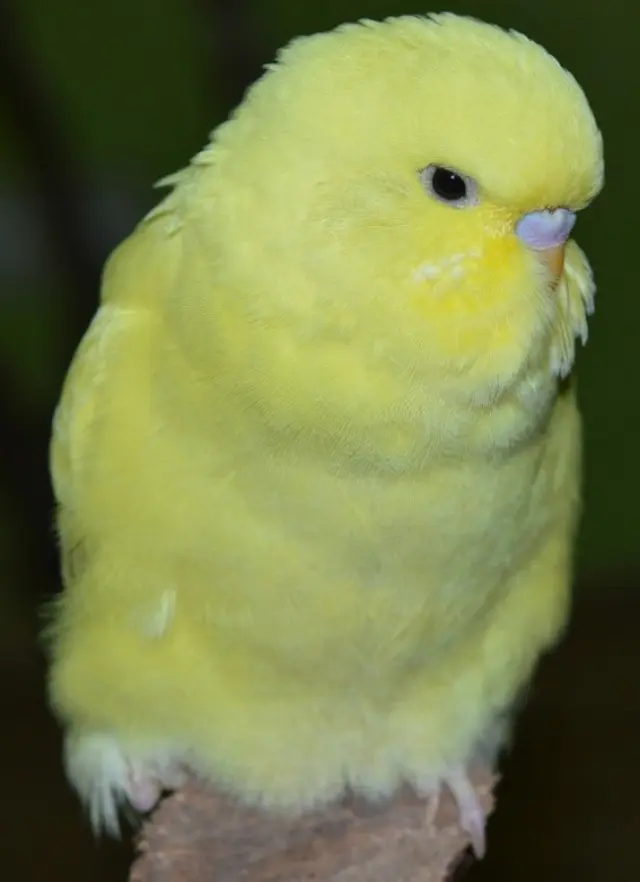
Each of these variants offers a unique display of nature’s color palette, contributing to the fascinating world of green budgies.
Through the interplay of genes and pigments, we get to witness these remarkable color variations, making the study and ownership of budgies a delightful experience.
Baby and Young Green Budgie
As we delve into the fascinating world of green budgies, it is important to acknowledge the early stages of their lives – the baby and young green budgies.
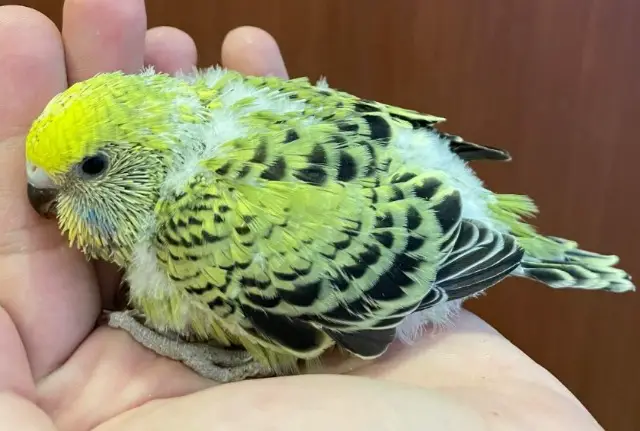
These stages are a significant period as they lay the groundwork for the development of the budgie, physically and behaviorally.
In about ten days, the chick’s eyes open, and by the end of the second week, feathers start to appear, initially as pin-like structures.
These soon burst open, revealing the first signs of the budgie’s ultimate color.
For a green budgie, this will be the moment when the yellow and blue pigments interplay, giving the budgie its characteristic green hue.
Over the next few weeks, the green budgie chick undergoes a significant transformation.
It gradually becomes fully feathered, and by the age of four to six weeks, the budgie is ready to leave the nest.
At this point, the young budgie has its adult feathers but still retains the stripes or ‘baby bars’ on the forehead, which disappear after the first molt at about 3-4 months of age.
Just like their mature counterparts, baby and young green budgies are curious and sociable creatures.
They begin to explore their surroundings, developing their unique personalities, learning social cues, and even starting to mimic sounds.
Why Are All Budgies Green Budgies in Their Natural Habitat?
In the vast Australian wilderness, where budgies are native, green is the prevailing color.
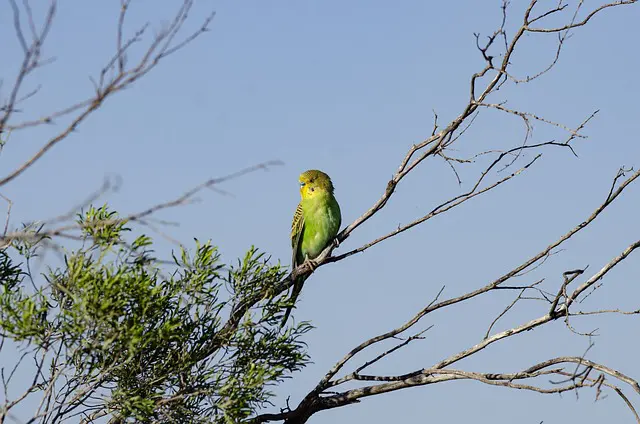
Despite the manifold color variations, we see in domesticated budgies today, it might surprise you to know that all wild budgies are essentially green.
Why is that so?
Nature has its own logic, and in the case of wild budgies, their green color serves a crucial purpose – camouflage.
The sprawling landscapes of Australia, with its extensive grasslands and sparse trees, predominantly echo shades of green.
A green budgie can seamlessly blend into this environment, hiding effectively from predators such as hawks, eagles, and even terrestrial threats.
When it comes to survival, invisibility is a key advantage.
The green plumage of wild budgies allows them to appear as just another part of the foliage, making them less noticeable to predators.
This concealment increases their chances of survival, allowing them to thrive in their natural habitats.Moreover, their unique green color is not just for camouflage.
The green series color also represents the ‘wild type’ gene, which is the original and dominant gene in budgies.
In genetics, wild type refers to the phenotype of the typical form of a species as it occurs in nature.
As such, unless human intervention through selective breeding alters their color, budgies in the wild will continue to exhibit their green plumage.
Visual and Behavioral Characteristics of Green Budgies
Green budgies display an array of physical characteristics that contribute to their captivating appeal.
Let’s dissect these attributes one by one:
Plumage
Their body and wings are covered in a vibrant green plumage, the intensity of which can range from light green to olive and dark green, depending on the specific genetic makeup.
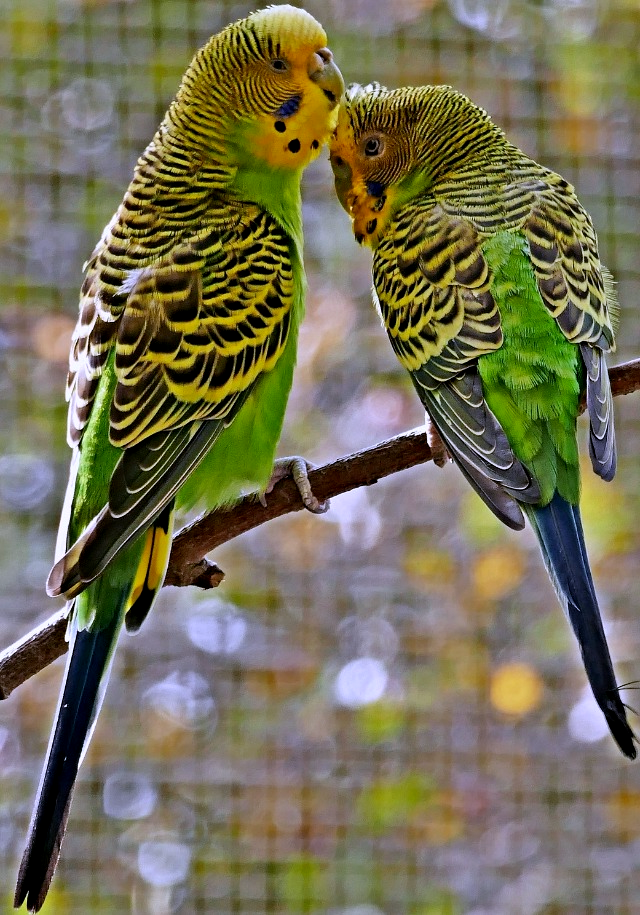
Cere
The cere, located above the beak, is a fleshy, waxy structure that houses the nostrils.
In mature males, it typically showcases a vibrant blue color, while in females, it varies from a pale blue to brown, depending on their breeding cycle.
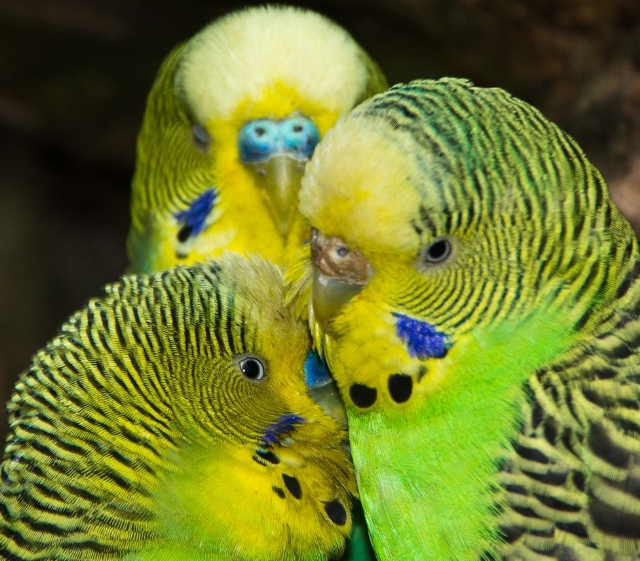
Eyes
Green budgies possess a white iris surrounding a black pupil.
However, it is worth noting that in baby budgies, the iris is not visible until they are around 8-12 weeks old.
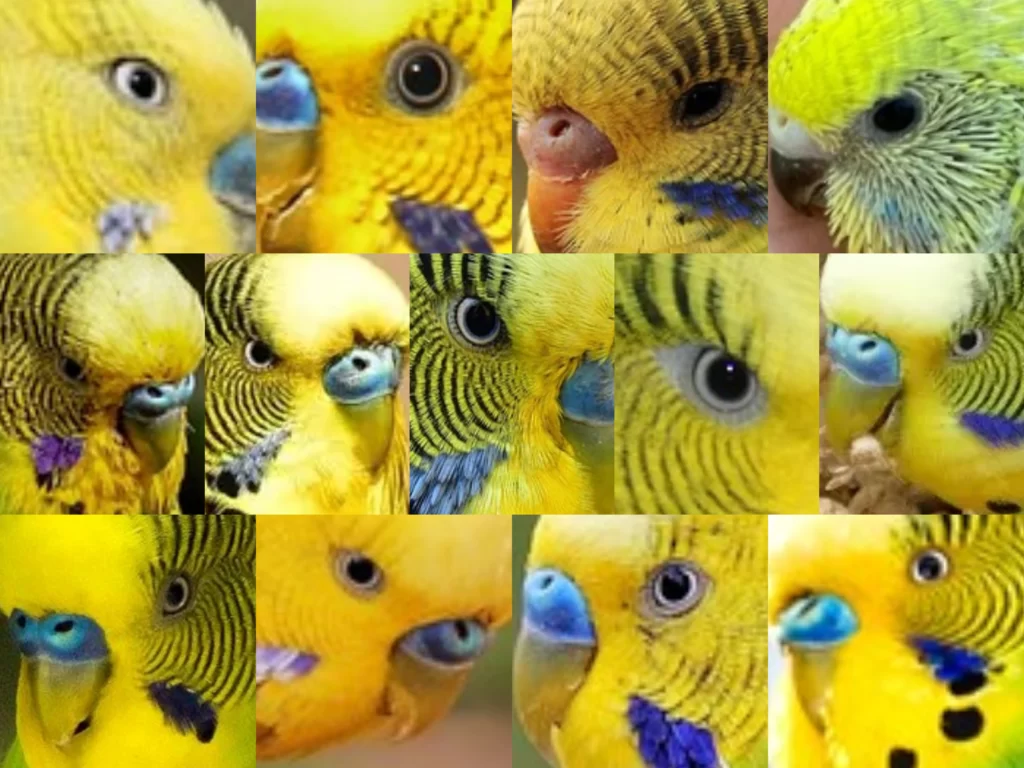
Beak
Their beak, primarily used for eating and climbing, is a light-yellow color, with the upper beak being a bit more curved and longer than the lower one.
Wings
Their wings exhibit a beautiful array of green hues, contrasted by black markings.
These black markings often create wave-like patterns that add a stunning touch to their overall appearance.
Tail
The tail of a green budgie is typically a mix of yellow and green, with the possibility of black striping in some budgies.
Feet
The feet of green budgies are pinkish-grey, equipped with zygodactyl toes – two facing forward and two facing backward – enabling them to climb and grip objects with ease.
A Behavioral Ensemble
Green budgies exhibit vibrant, sociable behavior, much like other budgies.
Their days are filled with activity, from exploring their surroundings to interacting with their companions.
They communicate through a variety of sounds, sometimes mimicking human speech.
These lively birds thrive on social connection, seen in their bonding activities like mutual preening and sharing meals.
Despite their color, their behavioral needs for mental stimulation, exercise, and social interaction remain the same.
Their dynamic behavior makes them captivating companions.
Breeding: How to Breed Green Budgies?
The process of breeding is a significant aspect of a budgie’s life.
It represents the perpetuation of the species, the birth of new life, and the continuation of the genetic lineage.
Color of the offspring depends on the color genetics of the parents.
In the case of green budgies, if both parent birds are green series, the offspring will also be green series.
If one parent is from the green series and the other from the blue series, the color of the offspring will depend on whether the blue series bird carries a green series gene.
Questions and Answers About Green Budgies
Green budgies, with their captivating beauty and lively behavior, often arouse curiosity and questions among bird enthusiasts and potential owners.
Let’s address some of these frequently asked questions to broaden our understanding of these delightful birds:
Are Green Budgies Rare?
No, green budgies are not rare.
In fact, they are quite common, especially in their natural habitats.
This is due to the green coloration providing them with excellent camouflage against predators in the wild.
How to Tell the Age of a Green Budgie?
Telling the age of a green budgie involves observing various physical traits.
Young budgies, up to 3-4 months of age, have black eyes with no visible iris.
They also have stripes or ‘bars’ on their forehead that recede as they mature.
After their first molt, usually around 3-4 months, the iris becomes visible and turns white, and the bars on the forehead disappear.
Are Green Budgies Female or Male?
While the color of a budgie can have certain genetic correlations with their sex, it is not a definitive indicator of whether a budgie is male or female.
Green budgies, similar to budgies of other color mutations, can be either male or female.
The color of a budgie, in this case green, is determined by the combination of its genetic makeup inherited from both its parents.
This involves complex processes of genetic inheritance, including dominant and recessive genes.
How Long Do Green Budgies Live? Green Budgie Lifespan
With proper care and a healthy lifestyle, green budgies can live between 10 to 15 years, sometimes even longer.
Their lifespan can be influenced by factors such as diet, exercise, mental stimulation, and veterinary care.
Are Green Budgies Healthy?
Green budgies, like any other budgie, can be healthy if they are well cared for.
This includes providing them with a balanced diet, regular exercise, mental stimulation, and regular health check-ups.
What Do Green Budgies Eat?
Green budgies, like all budgies, are primarily seed eaters.
However, a healthy diet for a budgie also includes fresh fruits and vegetables, along with an occasional serving of protein from sources such as hard-boiled eggs or cooked chicken.
What Should I Name My Green Budgie?
Naming your budgie is a personal decision and can be based on the bird’s personality, appearance, or a name that you simply like.
Here are 10 popular names for green budgies:
- Emerald: This name refers to the precious green gemstone, symbolizing richness and preciousness.
- Jade: Derived from a green ornamental mineral, this name is often associated with purity and harmony.
- Minty: Named after the fresh, green leaves of mint, this could denote a lively and energetic budgie.
- Fern: Inspired by the lush, green fern plants, this name could signify a budgie with a strong and independent spirit.
- Olive: This name, taken from the fruit of the olive tree, can represent peace and wisdom.
- Ivy: Named after the vibrant, green climbing plant, this might be perfect for a budgie that loves to explore.
- Kiwi: This name, derived from the fruit known for its brown skin and vibrant green interior, can signify uniqueness and vibrancy.
- Pistachio: Taken from the green-colored nut, this could be a cute name for a small, lively budgie.
- Clover: Inspired by the green, three-leaf plant considered lucky, this name can denote good fortune and joy.
- Sage: Named after the herb with grey-green leaves, this could signify a budgie known for its wisdom and calmness.
How Much Does a Green Parakeet Cost?
The cost of a green budgie can vary depending on factors such as the bird’s age, health, and where you are purchasing from.
The price range could be anywhere between $20 to $60.
Apart from Their Green Color, Do Green Series Budgies Have Any Different Features From Other Birds?
Apart from their color, green budgies share the same physical and behavioral traits with other budgies.
The difference lies in the genetic makeup responsible for their green coloration.

